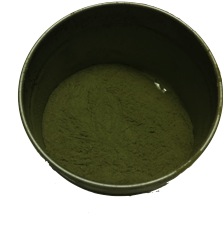 The artificial sweetener industry would like us to believe that we can have our cake and eat it too. They want us to feel like we are doing our body good when we choose a diet soda, or low calorie cookie. They have made their millions by convincing consumers that their products are superior because they don’t raise blood sugar and they don’t have calories. However, what are the trade-offs? What harm are we causing to our bodies in order to have these benefits and is it worth it?
The artificial sweetener industry would like us to believe that we can have our cake and eat it too. They want us to feel like we are doing our body good when we choose a diet soda, or low calorie cookie. They have made their millions by convincing consumers that their products are superior because they don’t raise blood sugar and they don’t have calories. However, what are the trade-offs? What harm are we causing to our bodies in order to have these benefits and is it worth it?
I have been anxious to strip search two of the most common artificial sweeteners on the market, to uncover what they might be hiding under there fancy claims. These two popular sweeteners are Sucralose (used in Splenda®) and Aspartame (used in NutraSweet® and Equal®).
SUCRALOSE
The company Splenda® uses the slogan “Made from sugar, tastes like sugar, but it’s not sugar!” They want consumers to believe that it is a natural product because it is made from sugar but that it is better for us than sugar because it contains no calories. Hold on a minute. So…. they take sugar and miraculously remove all the calories. It almost sounds like they hired a bunch of witches to wave their magic wands over the sugar, cast a spell and make the calories just disappear into thin air. I think it sounds too good to be true, let’s investigate further.
The truth is that although they use sugar as an initial input (keep in mind sugar is already a refined product), they manipulate and process it to the point where chemically it isn’t actually sugar at all! Instead of using witches to cast a spell, they use a process called chlorination which adds chlorine to the product. At this point, the body doesn’t recognize the molecule any more and therefore can’t use it to create energy. Since it doesn’t produce energy in the body it is considered to be calorie free. Having a food that is sweet tasting but low in calories sounds ideal, but is there a trade-off?
We now know that this is an artificial sweetener high in chlorine. Is this chlorine bad for us? The company would like us to believe it is not. They indicate on their website that MOST of the sucralose that is consumed is excreted from the body. I don’t doubt this claim. However, what concerns me is that it isn’t ALL being excreted. What’s not being excreted can cause harm over time as it gets lodged in our tissues. Also, studies have not been conducted to assess the cumulative affect of this product on the human body. Meaning, the health risks associated with frequent exposure to this product over a long period of time. The other issue is that chlorine is a pro-oxidant (the opposite of an anti-oxidant). It actually promotes the production of free radicals.
ASPARTAME
Even worse than sucralose is aspartame. This is made from protein by-products. They then add methanol which is a very toxic alcohol. Examples of other uses for methanol included paint thinner and fondu fuel. It’s probably no surprise that methanol is not something we want in our body. When it goes through our body, our liver changes it into formaldehyde. YIKES! Formaldehyde is ultra-toxic to the human body. Some studies have shown that it can affect our brain cells, vision, etc. Another use for formaldehyde is for embalming bodies. You might be asking yourself, why would a product that seems so harmful to our health be allowed in our food/beverage products? The reason is that there isn’t enough evidence to prove that consuming this product in the recommended doses causes significant enough harm to the human body in the short term. Meaning that our bodies are amazing and have the ability to handle this in small amounts. However, there also are no studies that show the cumulative effect of a lifetime of exposure. This is a scary thought since many people are consuming this product daily or even multiple times per day.
NATURAL SWEETENERS
Don’t worry, it’s not all bad news today. I now want to introduce you to a natural product that will blow your socks off! The product I am referring to is Stevia. It is a green plant that contains a natural chemical called steviosides in its leaves and flower buds. This is an extremely sweet plant. It is so sweet that you need less of it to get the same sweet taste of other sweeteners. Since you only need such a small amount, you don’t consume as many calories and you don’t have as much of an impact on your blood sugar levels. This is why it is a great product for diabetics.

Green Stevia
When you are looking to buy Stevia it is important to note that there are a few different variations. There is a liquid version, as well as both white and green powdered versions. To get the liquid stevia they have to extract the liquid from the crushed leaves/flowers using glycerin or alcohol. The white powdered Stevia is the most popular. However, stevia is green, not white. To get this white powder that looks like sugar they have to process the plant and add a filler (usually inulin which can cause digestive troubles, or brown rice bran which is a by-product from refining white rice). The green stevia is just crushed up stevia plant. This is the best option but be careful not to add too much. It is intensely sweet!!
Note: If you are the gardening type. You can actually grow stevia in your garden. Give it a try this summer and let me know how it goes!
Although Stevia sounds like the sweetener that is finally going to allow us to have our cake and eat it too, it does have a flaw. Although it tastes sweet, it doesn’t taste exactly like sugar. Therefore, it might not be a perfect substitute in all recipes.
In addition to Stevia, there are a number of other natural sweeteners out there that are great substitutes for processed white sugar and artificial sweeteners. Two of my favourites are honey and maple syrup (pure maple syrup, not table syrup).
Based on the information we uncovered today, I’m going to stick with the natural sweeteners wherever possible. If however the need arises for sugar due to a specific recipe, I will always choose sugar over the artificial sweeteners. Although sugar is still a refined product, I believe that it is the lesser of the evils when compared to the artificial options.
Let’s be honest, most of us get a sweet tooth once in a while. If we want to achieve long term balance we can’t ignore this temptation. Instead we can embrace it by allowing ourselves to enjoy natural sweeteners once in a while and refined sugar on the odd occasion. I don’t know about you but all this talk about sugar has made me hungry. I think I’m going to go whip up a yogurt parfait treat with layers of plain yogurt, home-made granola, berries and honey!! Delicious.


